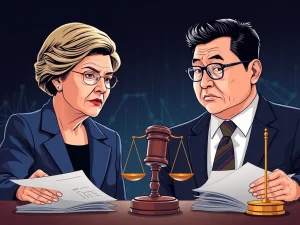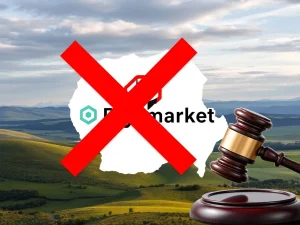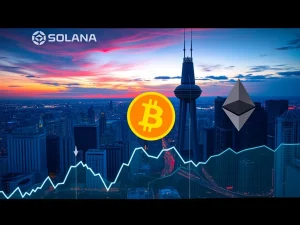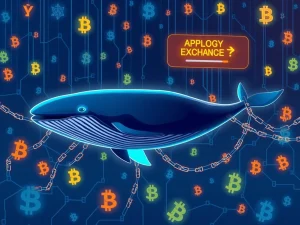Bold Token Burn: Mantra CEO’s Desperate Bid to Regain Community Trust After Crypto Collapse
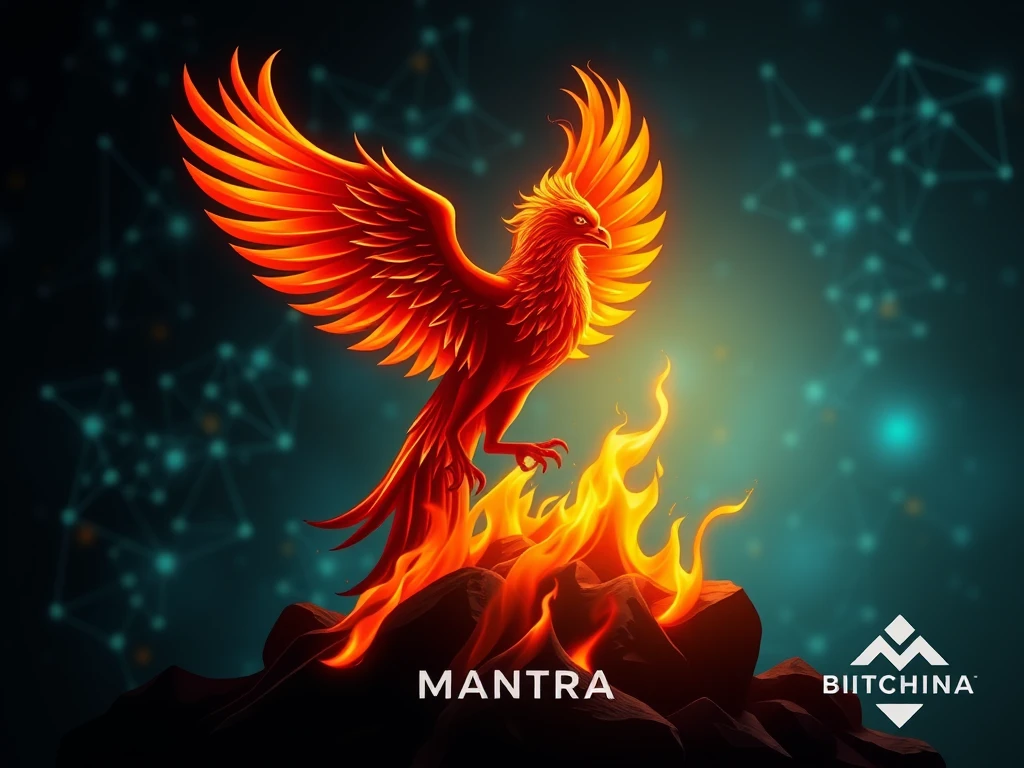
In a dramatic turn of events following the devastating collapse of the Mantra (OM) token, CEO John Mullin has announced a bold plan to burn the team’s entire allocation of locked tokens. This move, perceived by many as a desperate yet potentially powerful attempt to regain shattered community trust, comes after OM experienced a catastrophic price plunge, wiping billions off the market value. Is this token burn a genuine path to recovery, or just a symbolic gesture in the face of a major crypto collapse? Let’s dive into the details.
Mantra CEO’s Shocking Token Burn Proposal: A Deep Dive
Facing a community reeling from the sudden crypto collapse of OM, Mantra CEO John Mullin took to X to announce a drastic measure: burning all 300 million OM tokens allocated to the team. This substantial amount, representing 16.88% of the total token supply, was initially locked and scheduled for gradual release between 2027 and 2029. At current prices, this stash is valued at around $236 million, a significant incentive that Mullin is now willing to sacrifice.
Here’s a quick breakdown of the situation:
- The Pledge: Mantra CEO John Mullin proposes burning all team tokens.
- Token Amount: 300 million OM tokens, 16.88% of total supply.
- Original Plan: Tokens were locked and vesting until 2027-2029.
- Current Value: Approximately $236 million (at $0.78 OM price).
- Motivation: To rebuild community trust after the OM price crash.
Mullin stated, “I’m planning to burn all of my team tokens and when we turn it around the community and investors can decide if I have earned it back.” This statement underscores the gravity of the situation and Mullin’s apparent willingness to take extreme measures to restore faith in the project.
Community Divided: Will a Token Burn Restore Trust?
The community’s reaction to the proposed token burn is a mixed bag. While many appreciate Mullin’s initiative as a step towards accountability and transparency, others express concerns about the long-term implications.
Positive Reactions:
- Seen as a gesture of goodwill and commitment to the community.
- Potentially reduces token supply, which could be perceived as price-positive in the long run (though immediate impact is debatable post-collapse).
- Demonstrates willingness to sacrifice personal gain for the sake of the project.
Negative Reactions & Concerns:
- Some believe it’s a symbolic gesture that doesn’t address the root cause of the crypto collapse.
- Concerns about team motivation if their incentives are removed. Ran Neuner, founder of Crypto Banter, argues that burning incentives could hurt long-term team commitment.
- Questions remain about the circumstances leading to the collapse and whether a token burn is the most effective solution.
Mullin has suggested putting the decision to a decentralized vote, indicating a willingness to let the community decide the fate of the team tokens. This approach could further enhance community trust by giving token holders a direct say in the recovery process.
Unpacking the OM Token Collapse: What Went Wrong?
The elephant in the room is the dramatic crypto collapse of the OM token on April 13th. The price plummeted from around $6.30 to a low of $0.52, erasing over $5.5 billion in market capitalization. This sudden and severe drop has left investors and the community demanding answers.
Mantra has refuted allegations of insider trading and market manipulation, attributing the crash to “reckless liquidations” triggered by market volatility and changes to OM’s tokenomics implemented in October 2024. They deny controlling 90% of the token supply, a rumor that has circulated in the aftermath of the collapse.
Key points from Mantra’s explanation:
- Rejects Manipulation Claims: Mantra denies insider trading and market manipulation.
- Blames Liquidations: Attributes the crash to “reckless liquidations” due to volatility.
- Tokenomics Changes: Points to October 2024 tokenomics adjustments as a contributing factor.
- Exchange Activity: Acknowledges high OM activity on exchanges like OKX and Binance prior to the collapse, but these exchanges deny wrongdoing.
Mullin has promised a post-mortem statement to provide more transparency and explain the events leading up to the crypto collapse. He also mentioned utilizing the $109 million Mantra Ecosystem Fund for potential token buybacks and burns to stabilize the price, in addition to the proposed team token burn.
The Path to Recovery: Can Mantra Rebuild?
Mantra faces a daunting task in rebuilding community trust and recovering from the OM crypto collapse. The proposed token burn is a significant gesture, but it’s only one piece of the puzzle. Here’s what Mantra needs to focus on for a potential recovery:
- Transparency and Communication: The promised post-mortem statement must be thorough and transparent, addressing the community’s concerns directly.
- Addressing Root Causes: Simply blaming liquidations isn’t enough. A deeper analysis of the tokenomics changes and market vulnerabilities is needed to prevent future incidents.
- Community Engagement: Actively involving the community in decision-making, as suggested by the decentralized vote on the token burn, is crucial.
- Long-Term Vision and Development: Reassuring the community about the long-term viability and development of the real-world asset tokenization platform is essential to restore confidence beyond just price recovery.
The Mantra CEO’s decision to consider a team token burn is a dramatic response to a crisis. Whether it will be enough to truly regain community trust and pave the way for recovery remains to be seen. The coming weeks will be critical in determining if Mantra can navigate this turbulent period and emerge stronger, or if the OM crypto collapse marks the beginning of the end.

